*** For permission, to cite or quote, contact: LGilbert@scu.edu ***
Women Winemakers Receive Greater Acclaim Among Top-Rated California Wines, Not Only Chardonnay
Lucia Albino Gilbert, Ph.D. & John C. Gilbert, Ph.D.
Professors Emeriti, Santa Clara University
Published in Grape Collective (October 10, 2025)
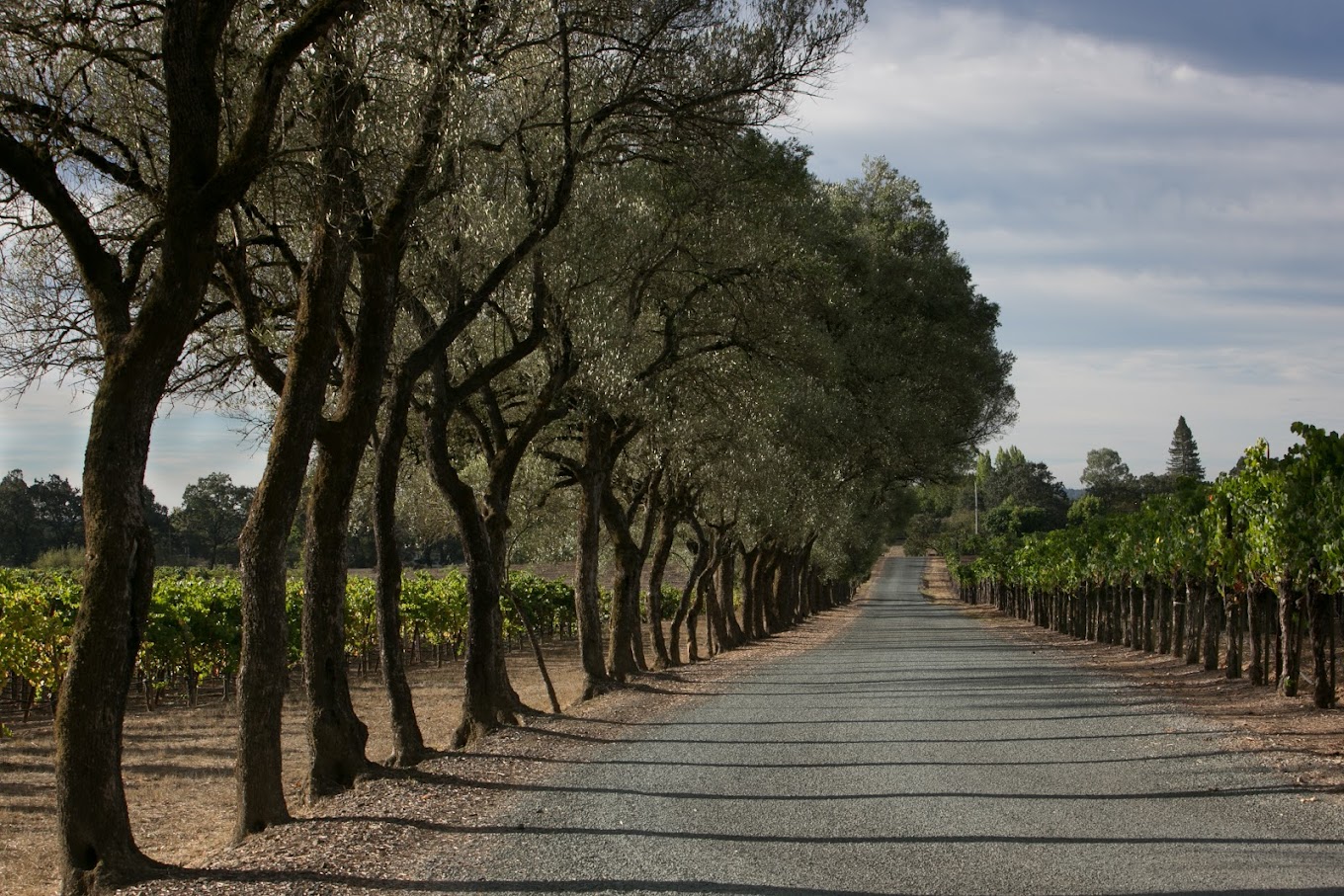
Photo credit: Kaare Iverson Photography
Précis. "The 50 Greatest California Chardonnays of the 21st Century so far," a recent Robb Report, provided an unexpected opportunity to illuminate lead women winemakers who produce top wines. In this article we share the findings from two studies. In our first study, we examined the extent to which the wineries that produced the Chardonnays in the Report were led by women winemakers. Our second study looked beyond this varietal, and using the same analytic criteria, examined California wines included on Wine Enthusiast and Wine Spectator Top 100 Lists from 2020 to 2024. California wineries with lead women winemakers are far fewer in number than those with their male counterparts, yet in both studies their wines were disproportionally more recognized among the top wines. We share the career paths and reflections of four winemakers whose wines were recognized in both studies, Geneviève Janssen of Robert Mondavi, Chantal Forthun of Flowers Winery, Katie Vogt of Pahlmeyer, and Heidi von der Mehden of Merry Edwards Winery.
***************************
The Robb Report highlights a collection of Chardonnays from esteemed California wineries with excellent winemakers. The authors identify these Chardonnays as "the very best the Golden State has had to offer the last 25 years." All but four of the wineries are in Napa Valley and Sonoma, with three others located in the Santa Rita Hills and one in the Santa Cruz Mountains.
Study 1: Robb Report's Chardonnays and Their Lead Winemakers
Given our longstanding interest in increasing the visibility of lead winemakers, particularly those who are women, our first study examined who crafted these wines. We first arranged the 50 wines in order by vintage and then contacted wineries to identify the lead winemaker for that particular vintage. Using this information, we coded whether the winemaker for each wine was a woman or man. Of the 50 winemakers, 16 were women and 34 were men. Most of the wines were produced at small family-owned wineries or family-owned wine companies.
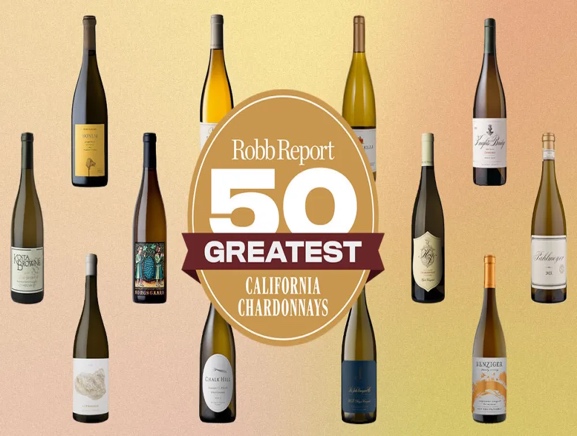
To identify possible changes over time in the relative recognition of winemakers who were women or men, we divided the quarter-century period into three shorter periods: 2000–2013 (approximately half of the full period but with only a few wines listed), and two five-year periods, 2014–2019 and 2020–2024, each of which included a "dream vintage" (those of 2014 and 2021, respectively; see Note 1).
The percentage of wines from wineries with a lead woman winemaker increased across the three time periods, ranging from only one winemaker (12.5%) in the earliest period to seven winemakers in the second period (32%), and then eight winemakers (40%) in the most recent period, 2020–2024. The overall percentage of lead women winemakers on the list was 32%, a remarkable finding given that the number of wineries having a lead women winemaker is only around 17% in the wine regions of Sonoma and Napa (see Note 2).
Figure 1 provides a visual representation of the findings. The first two rows show the percentage of wineries having lead women and men winemakers in these wine regions, what we call "current field presence." As noted earlier, for women, it is around 17%, and for men 83%. The second set of rows shows the percentage of wineries in the Robb Report having lead women and men winemakers, 32%, and 68%, respectively.
Figure 1. Percentage of Women and Men Lead Winemakers in Robb Report in Comparison to their Presence in the Field
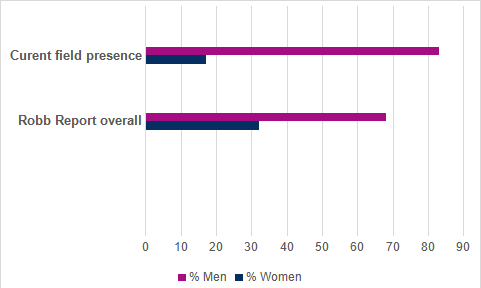
Comparing the set of columns labeled "overall" to the set labeled "field presence," shows that the overall percentage of Chardonnays produced by lead woman winemakers in the Robb Report at 32% is a much larger percentage than their 17% proportional presence in the field. In other words, although the wineries in these wine regions with lead women winemakers are far fewer in number than those with their male counterparts, their wines are disproportionally more highly recognized for their quality, as measured by the Robb Report (see Note 3).
Study 2: Is It Something About California Chardonnay or Is there Evidence beyond Chardonnay to Other Top-Rated Wines?
Some people might view Chardonnay as a "feminine" or "woman's" wine, and thus question whether this disproportionality would also be the case for red varietals such as Pinot Noir or Cabernet Sauvignon. We addressed this question by applying the same coding criteria as with the Chardonnay analysis to the California wines and their winemakers included in three key indicators of wine quality: Wine Spectator (WS) Top 100 List, Wine Enthusiast (WE) Top 100 Cellar Selections Globally, and Wine Enthusiast Top 100 Wines for the time period 2020–2024 (Note 4). This time period coincides with the third period in the first study and includes 2021, the most frequent vintage in the Robb Report.
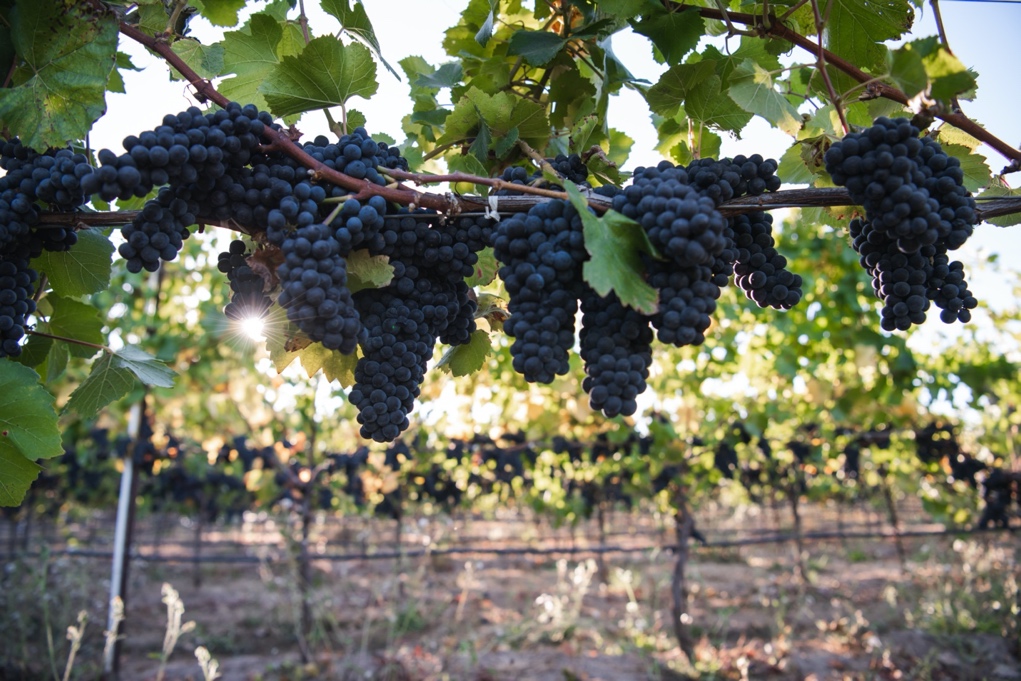
Courtesy Pellegrini-Olivet Lane
The same pattern emerged with the Top 100 Wine Lists as in the Chardonnay-based analysis of the Robb Report. During this particular time period, only some 14% to 17% of California wineries reported having a woman as lead winemaker (Note 2). Yet, a higher percentage of wineries in these highly regarded "Top 100 lists" had lead women winemakers in each of those five years, ranging from 20 to 32%, with an average of 26.4 % (Note 5). As a specific example, the percentage of California wineries having a lead woman winemaker and recognized on such lists was 27% for both the 2024 Wine Spectator and Wine Enthusiast Top 100 Wines and 25% for the 2024 Wine Enthusiast Top Cellar Selection list.
We next identified woman winemakers listed in the three WS/WE lists for the time period 2020–2024 who also had a Chardonnay included in the Robb Report. Of the 16 lead women winemakers on the Robb list, 8 (50%) also had one or more red wines included on a WE or WS Top list between 2020 and 2024. These winemakers are identified in the Summary Table with a "yes" in the Table's far-right column.
The Summary Table also provides the names of all 16 of the lead women winemakers in Study 1, together with the vintage and label for their Chardonnay. The winemakers are organized by the three time periods used in the study, and featured winemakers are indicated in blue.
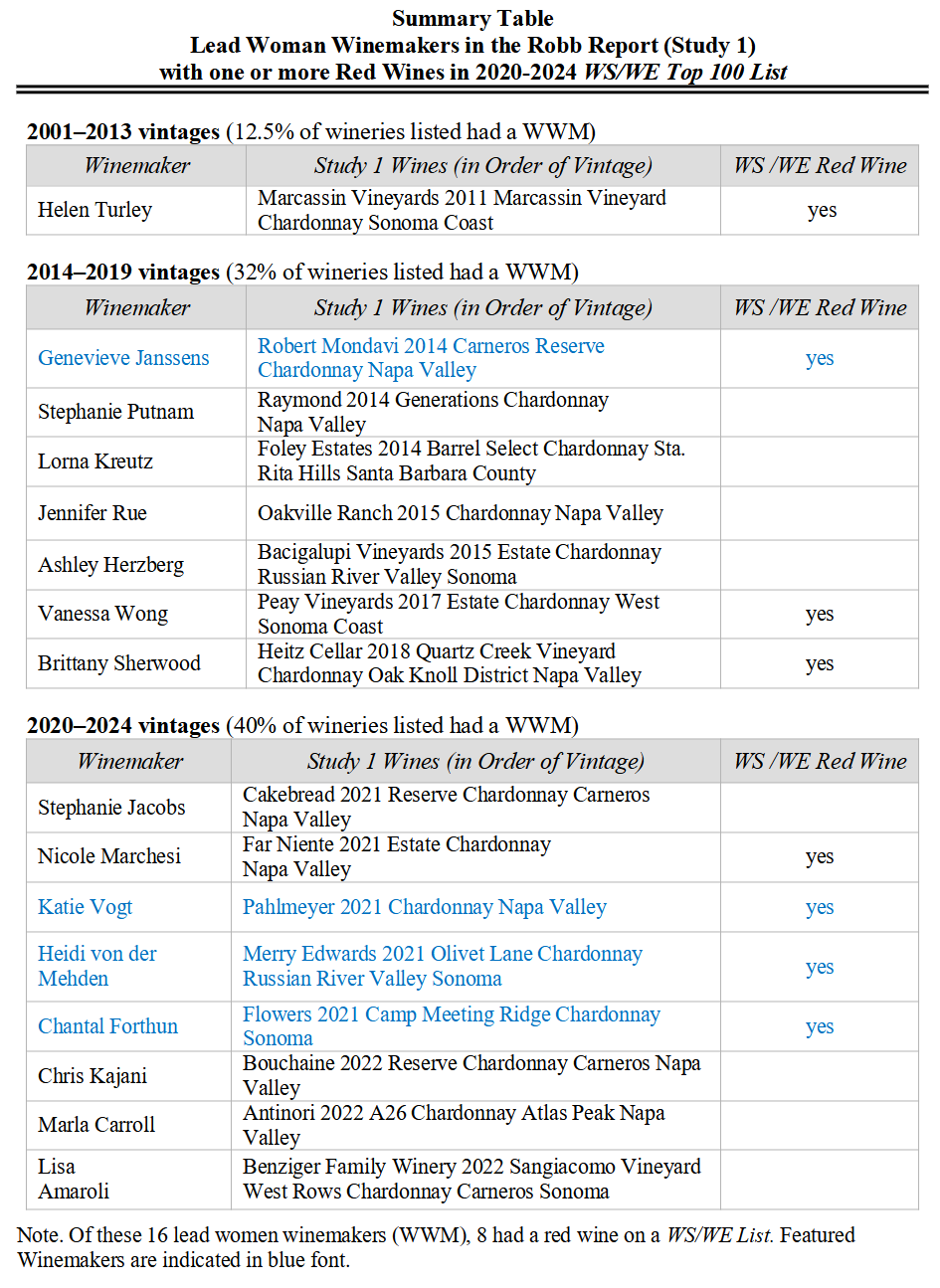
Featured Winemakers
We identified four winemakers with a 2014 or 2121 "dream vintage" Chardonnay and having one or more red wines on a WE or WS Top list, and asked them to provide brief comments for the article. We were interested in their reflections about the 2014 or 2021 vintage and the state of the industry at that time, and also their thoughts on the apparent growing presence of women crafting California top wines. They are Geneviève Janssen, Chantal Forthun, Katie Vogt, and Heidi von der Mehden.
We begin with Geneviève Janssen, Mondavi's now retired Director of Winemaking and Chief Winemaker, whose 2014 Chardonnay was on the Robb list. The three winemakers presented next are earlier in their careers, and they all crafted a 2021 Chardonnay. We provide details on their career paths and wines and then share their responses to our queries.
Geneviève Janssen, Chief Winemaker Emerita, Robert Mondavi Winery, Napa
Born in Morocco and raised in France, Geneviève studied with Emile Peynaud at the University of Bordeaux, France, receiving her National Diploma of Enology in 1974. For the next several years, she managed her family's vineyards in Corsica and France, and served as consulting enologist to many French chateaux.
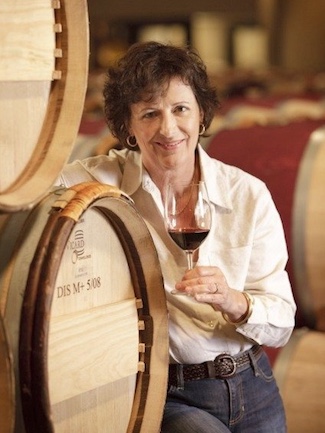
In 1978, drawn to the Robert Mondavi Winery's philosophy in winemaking and winegrowing and following a family visit to the winery with her father, she moved to the Napa Valley. She worked for a year as a lab enologist and assistant enologist at Mondavi before moving on to consulting positions. In 1989, she was appointed Director of Production at Opus One Winery, where she helped implement the winery's first major renovation, in the form of a multilevel winemaking facility. Seven years later, she was appointed Director of Winemaking at the Robert Mondavi Winery.
Geneviève served as Robert Mondavi's Director of Winemaking from 1997–2018 and then its Chief Winemaker until her retirement in 2024. That same year, Robert Mondavi Winery received the Best Vineyard in North America Award from The World's 50 Best Vineyards Academy in recognition of its historic To Kalon Vineyard. Notably, Geneviève has received France's "Croix de Chevaliere dans l'Ordre du Merite Agricole" and other recognitions, including being named Wine Enthusiast's 2010 Winemaker of the Year and Best Women Winemaker by "SAKURA" Japan Women's Wine Award in 2020.
Reflections on the 2014 Vintage. Geneviève led the team responsible for the Robert Mondavi 2014 Carneros Reserve Chardonnay.
"The 2014 vintage was a year with less but timely rainfall. For the Carneros, the seasonal rainfall might have been ideal as the region has the potential for vigorous vine growth and the shy rainfall keep the vines healthy but restrained. Harvest was on the early side but the fruit reached full maturity after a summer of moderate weather. We did not see many heat spikes or other issues prior to the fruit being harvested.Our style is one of moderation with hand harvesting of the Chardonnay at maturity rather than over maturity. All Chardonnay lots are put to barrels for fermentation with the Reserve being at least 50% new French oak. Whenever possible, Native yeasts are employed for the alcoholic fermentation. Upon completion of alcoholic fermentation, Malolactic fermentation is started with the goal of balancing the wine."
The Winery. Founded in 1966 by Robert Mondavi with his oldest son Michael, the winery is known for its excellent Reserve Cabernet Sauvignon and Reserve Fumé Blanc, both from fruit sourced from the To Kalon Vineyard.
WS/WE Top 100 Wines past five years.
WS 2022 Top 100 Wines: Robert Mondavi Cabernet Sauvignon Oakville The Estates 2019
Chantal Forthun, Director of Winemaking, Flowers Vineyards & Winery, Sonoma
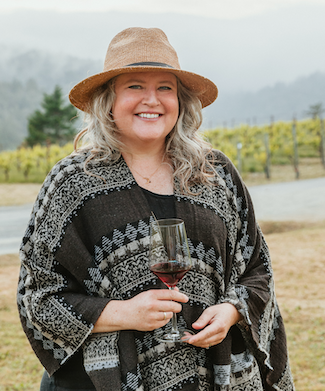
Chantal, a California native, received a B.S. degree in Biological Sciences from California State University, Chico in 2005, and moved up from being enologist at Oak Ridge Winery in Lodi to assistant winemaker at Bonny Doon Vineyard in Santa Cruz, where she worked with the legendary Randall Grahm. It was at Oak Ridge while barrel fermenting Chardonnay that she realized that she'd found the right career, one that engages all the senses, combines science, art, and physical labor, and fosters camaraderie through teamwork. Following a stint in New Zealand's Central Otago region, she accepted a winemaker position at Flowers in 2012, working under David Keatley, the head winemaker at the time. With his departure in 2016, she was promoted to Director of Winemaking.
Chantal follows a number of distinguished former winemakers at Flowers, including Steve Kistler, whose Chardonnay is also on the Robb list. In recognition of her talents, Wine Business named Chantal a "2022 Wine Industry Leader."
The Winery. Flowers Vineyards and Winery, now located in Healdsburg, was founded by Walt and Joan Flowers in 1989, former nursery owners with a keen interest in wine. They purchased land on the northern Sonoma Coast in Cazadero, and planted Pinot Noir and Chardonnay on the property's ridge, matching rootstocks to soil types. The ridge was named Camp Meeting Ridge after the Pomo Indians who camped in the area in the summer. (See Note 6).
Flowers became part of Huneeus Vintners, the wine company owned by the Huneeus family, in 2009. Wine Enthusiast included the winery among its five nominees for the 2025 Wine Star Award for "American Winery of the Year."
Reflections on the 2021 Vintage. Chantal prides herself on the fact that the winery leads with a philosophy rooted in precision farming. Her approach is deeply attuned to the unique characteristics of each vineyard block—carefully considering soil composition, microclimates, and the influence of the surrounding wild landscape. Under her guidance, the viticulture team practices meticulous organic farming and relies exclusively on native yeasts to craft wines that purely express their coastal origins.
Her reflections on the 2021 season and the Camp Meeting Ridge Chardonnay, appear below the photo of its flagship estate vineyard.
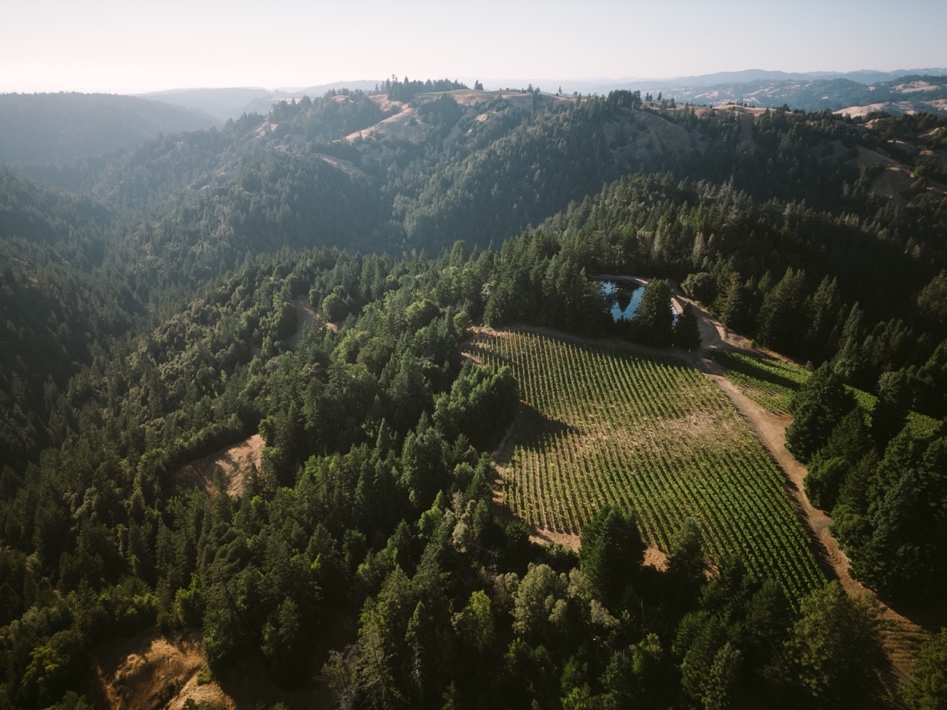
Photo credit: Mike Battey Photography
"The 2021 Camp Meeting Ridge Chardonnay Sonoma Coast marked my 10th vintage at Flowers, and it was especially exciting to see how beautifully the site expressed itself that year. The extreme elevation, dense evergreen forests, geologically diverse soils, and dramatic influence of the nearby Pacific Ocean gave the wine its hallmark purity and tension. The notably dry growing season and mild summer temperatures in 2021 supported slow, even flavor development while keeping acid levels high and bright. In the end, we had the luxury of timing our pick for optimum balance."
WS/WE Top 100 Wines past five years. Three of her wines appeared on these top lists between 2020 and 2024.
WS 2023 Top 100 Wines: Flowers 2021 Pinot Noir Sonoma Coast
WE 2024 Top 100 Wines: Flowers 2022 Pinot Noir Sonoma Coast
WS 2024 Top 100 Wines: Flowers 2023 Chardonnay Sonoma Coast
Kathryn (Katie) Vogt, Winemaker, Pahlmeyer Winery, Napa
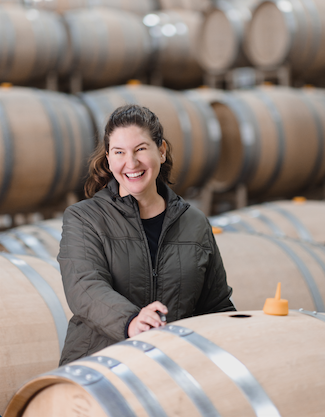
Katie started her journey to winemaking by earning a B.S. degree in Agribusiness with a minor in Viticulture and Enology from California Polytechnic State University, San Luis Obispo, in 2009. After graduation, she joined Cypher Winery in Paso Robles as its enologist and laboratory manager and then became its assistant winemaker, working under the mentorship of Christian Tietje, now of Anarchy Wine Co., known for his bold varietal pairings and for challenging industry conventions. A few years later, Katie joined the E. & J. Gallo portfolio of wineries, starting as an assistant winemaker for its Central Coast units at Edna Valley Vineyard and Bridlewood Estate Winery. There was little room for error or second-guessing with large portfolios and significant investments at stake at these two facilities. She quickly learned to trust her talent, instincts, and technique in order to address the challenges there. In turn, she quickly gained the esteem of her winemaking peers.
In mid-2015, Katie moved to the Napa Valley as assistant winemaker for the Louis M. Martini Winery in St. Helena and was promoted to associate winemaker in March 2019. She was named winemaker for Pahlmeyer in St. Helena later that same year, where she crafts its flagship Proprietary Red, Merlot, Chardonnay, and the Pahlmeyer "Jayson" tier (see Note 7).
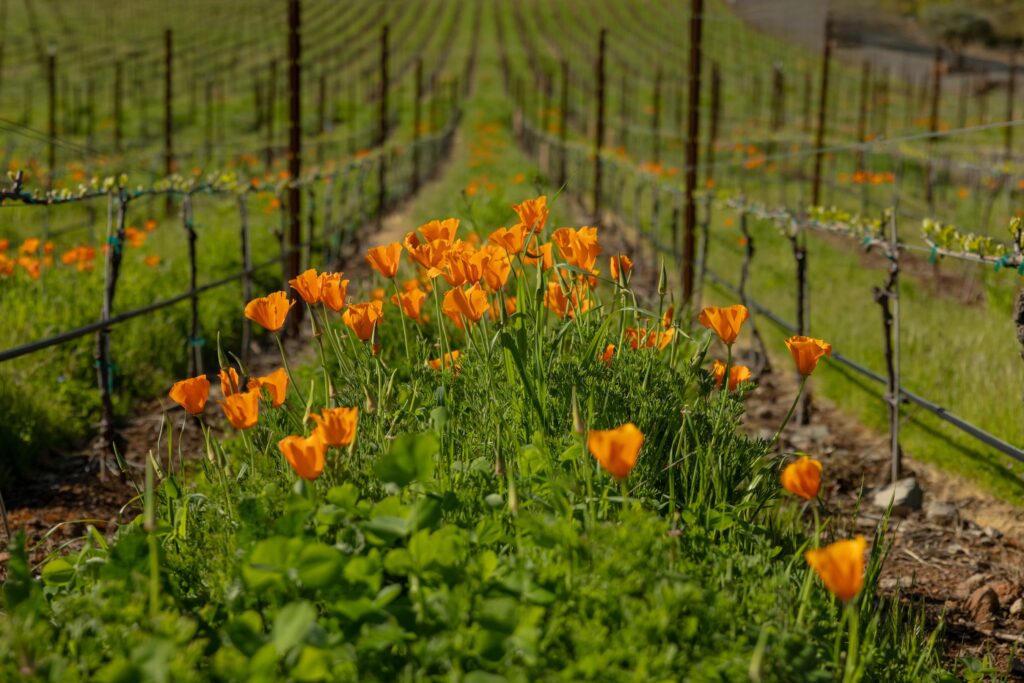
The Winery. Jason Pahlmeyer, inspired by the wines of Bordeaux, founded Pahlmeyer in 1986; E&J Gallo acquired the winery in 2019. The devastating 2020 Glass Fire destroyed the Pahlmeyer facility. Its 2021 Chardonnay was among the first wines produced at its new facility on Atlas Peak Road in Napa.
Reflections on the 2021 Vintage. The Pahlmeyer 2021 Chardonnay Napa Valley appears in the Robb Report. Katie noted that "The 2021 vintage was exceptional, allowing us to craft some truly stunning wines. Chardonnay, in particular, had so much concentration, yet was so finessed—a wonderful combination."
WS/WE Top 100 Wines past five years.
WE 2024 Top 100 Wines: Pahlmeyer 2021 Red Napa Valley
Heidi von der Mehden, Winemaker, Merry Edwards Winery, Sonoma
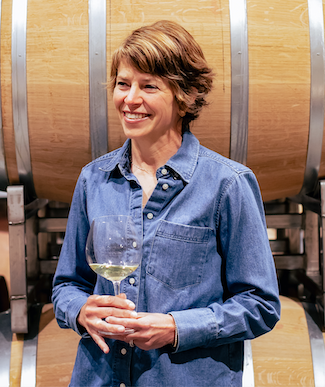
Based on our extensive research in this area, Heidi's career path is quite unusual (Note 8)! She first used her science background to teach in the Peace Corps and then applied it to crafting wine under the mentorship of two legendary California winemakers, Richard Arrowood and Merry Edwards, both now retired.
Growing up in Santa Rosa, California, Heidi earned a B.S. degree in Chemistry from Santa Clara University in 1997. On returning to California after teaching in Tanzania, Heidi worked her way up from laboratory technician and enologist at Kenwood Vineyards to assistant winemaker at Mauritson Winery. She joined Arrowood Winery in 2007 as associate winemaker, crafting Cabernet Sauvignon and Chardonnay, among other varietals, and working with master winemaker Richard Arrowood whom Heidi succeeded as lead winemaker in 2010. (The winery had sold to Jackson Family wines in 2006, and Richard Arrowood stayed on until 2010 to oversee the winery during the transition of ownership.)
Heidi then moved to the Merry Edwards Winery in 2015 as associate winemaker. In this role, she not only worked with another iconic winemaker, Merry Edwards, but also broadened her focus to include Pinot Noir and Sauvignon Blanc. She was promoted to winemaker in 2018, when Merry stepped aside as the winemaker. As noted by Heidi, "the Merry Edwards style is unique and complex. It takes meticulous attention to detail, from the vineyard to the cellar, to achieve this."
The Winery. Merry Edwards, a trail-blazing women winemaker who entered the field in 1974, fostered women's greater presence as winemakers. Her winery, established in 1997 in Sebastopol, focuses on the production of three varietals, Pinot Noir, Chardonnay, and Sauvignon Blanc, with a sense of place from the Russian River Valley and Sonoma Coast. Merry and her husband sold the winery to Champagne Louis Roederer in 2019, the year after Heidi was appointed winemaker.
Reflections on the 2021 Vintage. Heidi shared quite extensive, thoughtful reflections about the 2021 vintage and the state of our industry at that time. The Merry Edwards 2021 Olivet Lane Chardonnay appears in the Robb Report.
"In 2021, the wine industry was just finding its footing after the upheaval caused by the Covid pandemic and the devastating wildfires of 2020. Covid was subsiding, but it continued to impact our daily lives—we wore masks and maintained distance from one another, essentially adjusting to a new "normal."One of the biggest hurdles we faced in 2021 was a shortage of labor. With restricted international visas and businesses reopening across the country, we faced stiff competition for available workers. We were only able to hire five interns instead of our usual 10, and four of the five were women, which was unusual. They proved to be driven, hardworking and determined. With a crew half the normal size, we still managed to complete the work in a timely manner, which taught us lasting lessons about efficiency and resourcefulness.
Looking back, I wonder if this moment let us see the changes that need to be made in order for women to thrive in the wine industry. Businesses were forced to be open to new ways of working, offering remote options and flexible hours. Also, it was a time of pulling together, with families and neighbors supporting one another—especially with child care—which allowed more women to participate fully in industries where rigid schedules can be a barrier. In winemaking, the competing demands of harvest and motherhood have pushed out many women, so this shift opened doors and allowed exceptional talent to step in and succeed.
For our winery, 2021 ended up being a stellar winegrowing year: we had small yields in the vineyard and made excellent quality wines. We had fewer hands but greater efficiency. And it marked a shift in how we work, resulting in greater opportunities for women."
WS/WE Top 100 Wines past five years. Four of her wines appeared on these top lists between 2020 and 2024.
WE 2020 Top Cellar Selection: Merry Edwards 2017 Estate Pinot Noir
WE 2023 Top 100 Wines: Merry Edwards 2021 Georganne Pinot Noir (Sonoma)
WS 2024 Top 100 Wines: Merry Edwards 2022 Sauvignon Blanc Russian River
WE 2024 Top Cellar Selection Merry Edwards 2021 Olivet Lane Pinot Noir
An image of the Olivet Lane Vineyard is the opening photo of our article. Both the 2021 Chardonnay listed in the Robb Report and the WE 2024 Top Cellar Selection Merry Edwards 2021 Olivet Lane Pinot Noir are from this property.
Reflections on the Growing Presence of Women Crafting California Top Wines
All four winemakers were consistent in their overall positive reflections. They also noted areas of continuing concern as well as important aspirational goals.
Chantal Forthun responded that she "is inspired by the growing acknowledgment of women winemakers in California and beyond—the more diverse the perspectives in the vineyard and the cellar, the more dynamic and nuanced the wines become."
Katie Vogt added, "It's a beautiful thing to witness women at the helm of winemaking—shaping the soul of each vintage with grace, strength, and artistry. With every bottle, we're driving the craft forward, setting new standards and inspiring the next generation of vintners."
Heidi von der Mehden wondered when changes in the industry would progress to the point that the term women winemaker would become an anachronism.
"I know women winemakers who are thriving today, and they are making world-class wines. But, as you [the authors] know, the numbers show that there are still many more men in top winemaking positions than women. I think progress has been made, and I am proof of that, but there is still a lot of work to do.I am optimistic that having more women in leadership positions, crafting world-class wines, will open everyone's minds and break down the stereotypes that can hold us back. By that I mean, there will no longer be a need to put the word "woman" in front of "winemaker" because it will just be a natural thing that women are winemakers!"
Geneviève Janssen expanded on this theme,
"As a woman and a winemaker myself, I believe winemaking should never be defined by gender. It is defined by skill, dedication, vision, and a deep connection to the land. A great winemaker is someone who listens to the vineyard, respects the craft, and continually pushes toward excellence. Wine should be judged by its character and soul. Talent, intuition, and connection to the vineyard are what define a great winemaker no matter the gender. Equally important: winemaking is a team effort. One of the most valuable skills a winemaker (woman or man) can have is the ability to build a strong, collaborative team — to trust every part of the chain, from vineyard to bottling. When we work together like a family toward a shared goal, we craft wines that truly reflect something greater than ourselves. What matters most is the wine we create, and the story it tells.It's time for industry leaders to recognize this, and to place the same trust in women as they do in men. Responsibility, leadership, and creative control in winemaking should be genderless."
Closing Remarks
The career paths for both women and men winemakers are challenging and demanding, and the fact that the field remains male dominated presents additional challenges to women who wish to achieve this goal. Assumptions and gendered stereotypes about women and men are reflected in societal practices and laws, and as Heidi noted, work-family policies can especially affect women's opportunities. In this regard, Our Women Winemakers of California and Beyond website provides useful resources. (e.g., Career Advice from 100+ Noted Women Winemakers Globally).
Dealing with major disruptions caused by the Covid pandemic and the devastating 2020 wildfires led to some "lasting lessons about efficiency and resourcefulness" at Merry Edwards, and pointed to important ways forward. The same may be true today, given the new and continuing challenges facing the industry. We remain hopeful. We particularly remain hopeful, along with the distinguished long-time winemaker, Geneviève Janssens, that the wine industry is ready to accept that the responsibility, leadership, and creative control in the industry is genderless.
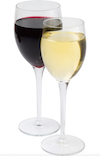
Indeed, the 2025 Robb Report may serve as a microcosm of the steady and needed changes occurring in the wine industry. If so, we see three key indicators that predict continuing future progress.
- First is the clear evidence that wineries with lead women winemakers disproportionally craft award-winning white and red wines, and that the number of wineries with lead women winemakers is growing.
- Second, consistent with the first indicator, several wineries in the Robb Report recently appointed their first lead woman winemaker. Examples include Kristy Melton at Freemark Abbey (2020), Kylie Dutton at Dutton Estate (2024), and Melissa Paris at Alpha Omega (2024).
- Third, among the 50 wineries in the Robb Report are several examples of the consecutive appointments of lead women winemakers. Cakebread Cellars has appointed three consecutive lead women winemakers beginning with Julianne Laks in 2002. At Oakville Ranch, Jennifer Rue followed Anne Vawter as lead winemaker, at Foley Estates, Lorna Kreutz succeeded Leslie Mead Renaud, and at Merry Edwards, Heidi von der Mehden followed Merry Edwards.
The findings from the current studies significantly buttress results from our previous research (Note 9) indicating that progress in terms of women's presence and performance as lead winemakers is surely taking place. This is reflected by the recognition of the top wines they produce. The future continues to look bright.
***************
Opening photo courtesy of Merry Edwards Winery. This heritage property is one of the oldest vineyards existing in the appellation and has been recognized as a prime example as a source of fruit for the classic style of Russian River Valley Pinot Noir and Chardonnay. Click here for a downloadable PDF of this article.
Notes and Footnotes.
We are grateful to the personnel at the wineries who responded to our requests regarding the winemaker of the Chardonnay included in the Robb Report.
We found errors in the report and have alerted the authors to them. Specifically, the newly appointed winemaker at Dutton Family Winery is Kylie Dutton, not Kyndall Dutton, and the winemaker at Peay Vineyard is Vanessa Wong, not Andy Peay.
- Wine Spectator Report for the 2014 vintage; for the 2021 vintage, winesaveur.com and Napa Valley Vintners.
- We have conducted two major studies regarding the presence of lead women winemakers among CA wineries. The first study in 2011 found that 9.5% of California wineries reported having a lead woman winemaker. The percentages differed by CA wine region, with the state's two main regions, Sonoma/Marin and Napa, having the highest percentages at 12.4% and 12.2% respectively. Our 2020 study found there had been an increase in the overall percentage of CA wineries with lead women winemakers to 14%. Again, the percentages differed by CA wine region, with the highest being 17% for Sonoma/Marin and the South Central Coast.
- The chi square analysis used to test whether the proportions differed was significant at the .05 level.
- Wine Spectator and Wine Enthusiast editors survey the wines reviewed over the previous 12 months from regions and vintages around the world and then select the Top 100.
- A listing of these wines and their winemakers appear in the summary report, Facts and Figures Gathered in Our On-going Research on California Women Winemakers, posted on our research website. The chi square analysis used to test whether the proportions differed was significant at the p= .09 level.
- Information provided by The Pinot File.
- Also see comments from James Suckling.
- Career pathways are central to our book, Women Winemakers: Personal Odysseys.
- These studies are posted on our research website under the heading, "Book/Studies."
Author Bios: Lucia Albino Gilbert, Ph.D., and John C. (Jack) Gilbert, Ph.D., both Professors Emeriti, have had long and distinguished careers at The University of Texas at Austin and Santa Clara University and are widely published in their fields. Their research on different aspects of California's wine industry and its leading wineries and winemakers combines Lucia's academic field of Psychology and John's academic field of Organic Chemistry. The acclaimed book, Women Winemakers: Personal Odysseys, is among their many publications. They can be reached at lgilbert@scu.edu. Their research website is www.womenwinemakers.com.


